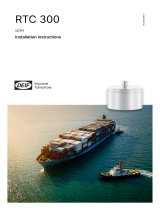
2
Contents
1 How to Use this Manual ............................................................................................................................. 4
How to Use this Manual ............................................................................................................................ 4
Related Manuals ....................................................................................................................................... 5
Warnings and Cautions ............................................................................................................................ 6
Symbols and Conventions ........................................................................................................................ 7
Specifications ............................................................................................................................................ 8
Obtaining Technical Support .................................................................................................................... 9
2 Theory of Operations ............................................................................................................................... 10
System Overview .................................................................................................................................... 10
About the Components ........................................................................................................................... 12
Operational Systems .............................................................................................................................. 18
3 Troubleshooting Resources ..................................................................................................................... 23
Obtaining Assistance through Remote Access ...................................................................................... 23
Service Kit ............................................................................................................................................... 24
Message Center ..................................................................................................................................... 24
Error Logs ............................................................................................................................................... 33
Wiring Diagrams ..................................................................................................................................... 34
Printed Circuit Boards ............................................................................................................................. 36
Troubleshooting with Printed Circuit Boards .......................................................................................... 39
Network Communications ....................................................................................................................... 59
4 Troubleshooting Procedures .................................................................................................................... 60
Communications Fail .............................................................................................................................. 60
Workstation Fails .................................................................................................................................... 62
Touch Control Panel Fails ...................................................................................................................... 63
Movement Operations Fail ...................................................................................................................... 63
X-ray Output Fails or is Incorrect ............................................................................................................ 70
Sensor Fails ............................................................................................................................................ 73
Indicators Fail .......................................................................................................................................... 74
5 Troubleshooting Image Quality ................................................................................................................ 75
Characteristics of a Quality Image .......................................................................................................... 75
Typical Problems and their Causes ........................................................................................................ 76
Checking Image Quality .......................................................................................................................... 78
6 Overview of Service Tasks ....................................................................................................................... 81
Service Screen Overview ....................................................................................................................... 81
Opening and Using the Service Screen ................................................................................................. 82
Life Test .................................................................................................................................................. 86
7 C-Arm ....................................................................................................................................................... 88
C-arm Alignment ..................................................................................................................................... 88
8 Collimator and X-ray Generator ............................................................................................................... 90
Collimator Calibration ............................................................................................................................. 90
Beam Alignment ..................................................................................................................................... 91
9 Telescoping Column ................................................................................................................................ 92
Column Opto Function ............................................................................................................................ 92
10 Lasers..................................................................................................................................................... 93
Align Lasers ............................................................................................................................................ 93























